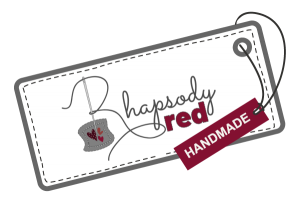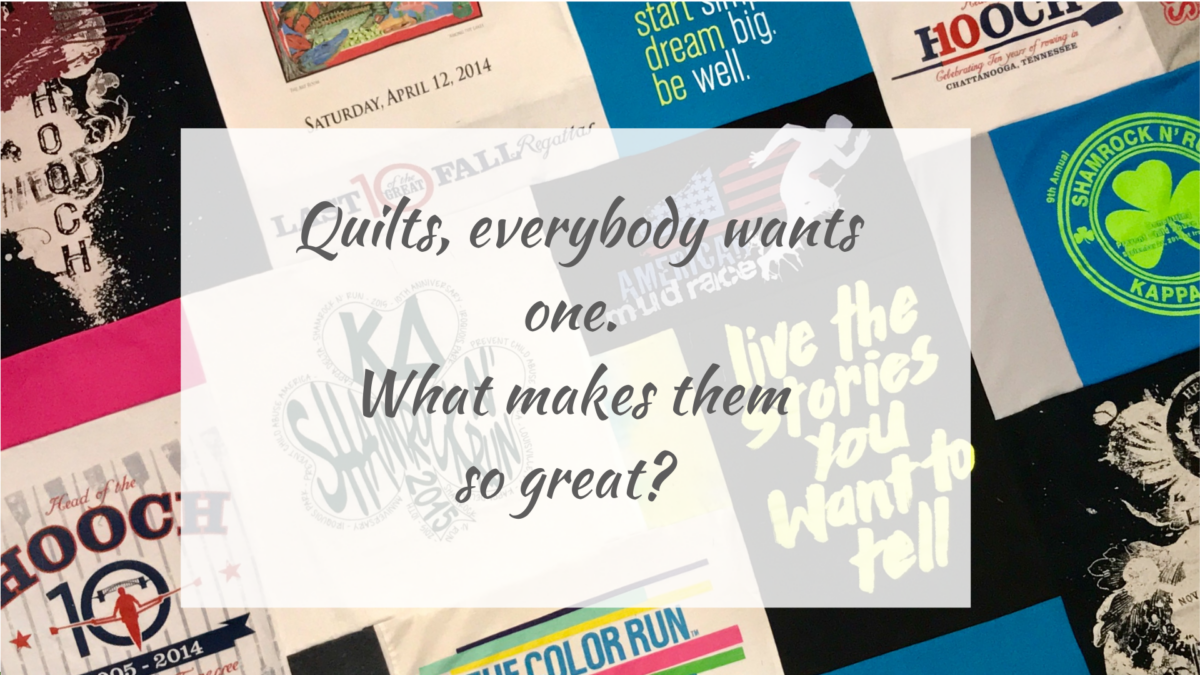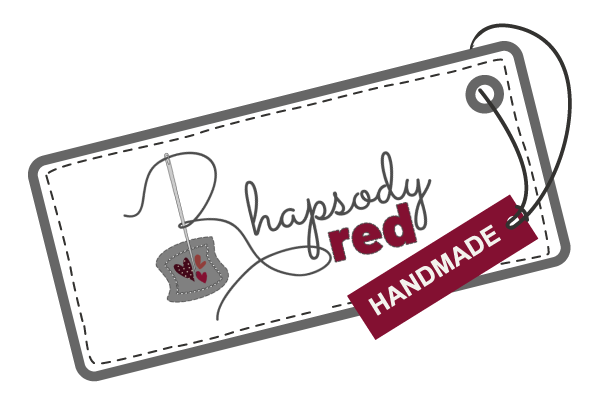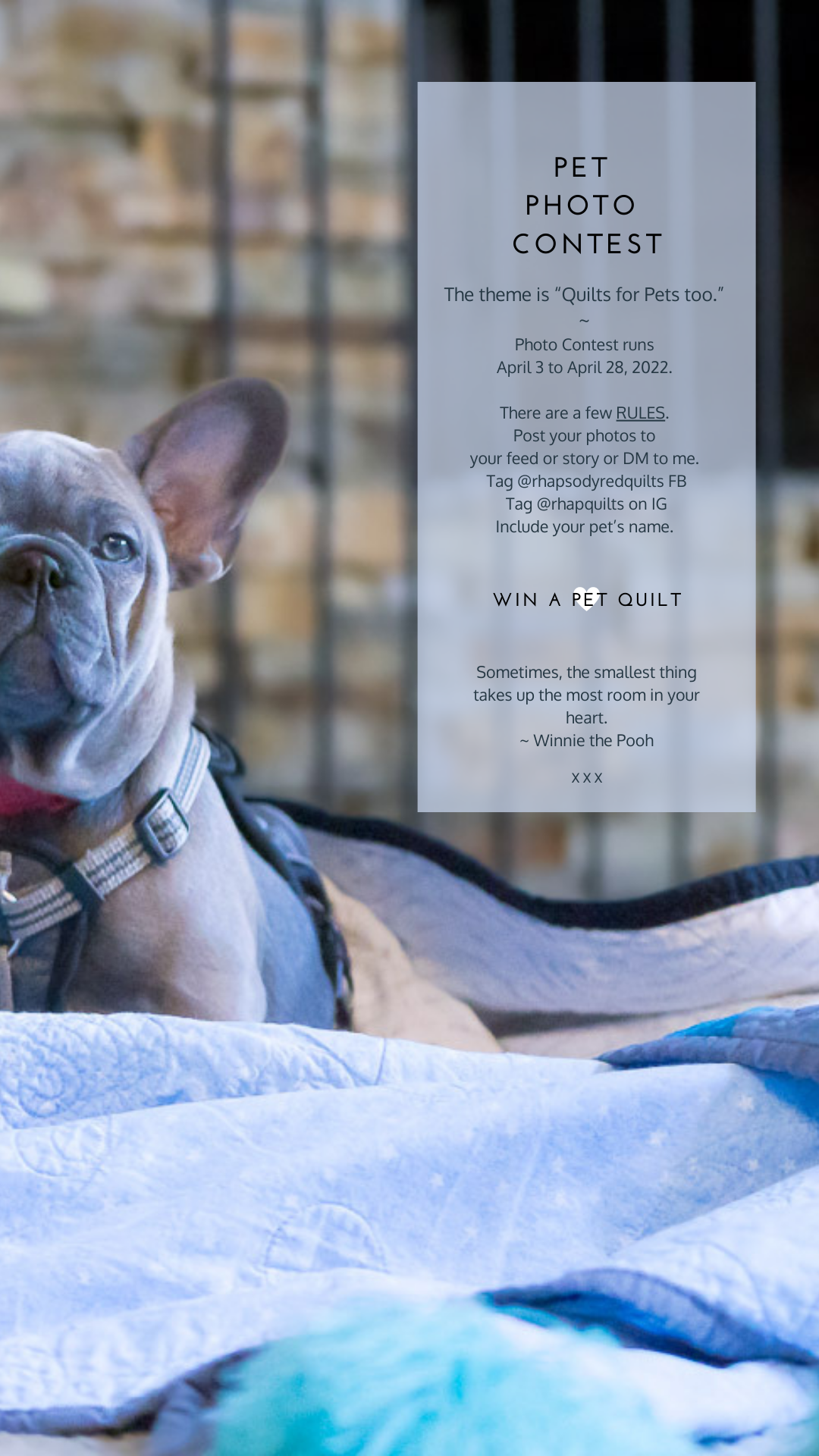What makes a quilt a quilt? Asking this question in a circle of quilters is like bringing up politics at the family Thanksgiving dinner table. There are so many nuances. And quilts are so near and dear to quilter’s hearts.
If you are not familiar with quilts and don’t have a family history of quilters, it’s easy to mistake a blanket of sorts for a quilt or call a quilt a blanket. You’d definitely raise an eyebrow or two from quilters in the room. So here’s the low-down.
A quilt is traditionally composed of three layers of fiber. They consist of a woven fabric top, a layer of batting, and a woven fabric back, all stitched together in decorative patterns. They are different from other bed coverings since tops are generally pieced together with many pieces of cloth.
Let’s define t-shirt quilts and t-shirt blankets here as we start the conversation.
T-Shirt Quilt
A t-shirt quilt is a quilt whose top layer is made of t-shirts. It typically has a center layer of batting and a back of fabric. The stitching is a critical part of the assembly since the top consists of worn t-shirts and therefore worn fibers. Some will not have batting and include a warmer fabric as the backing, such as fleece or flannel. For the most part, you can simply think of them as quilts that have t-shirts as the pieced tops.
T-Shirt Blanket
A blanket is typically a single layer. T-shirt blankets have two layers, the t-shirt top and soft back fabric, usually fleece, to give it body and warmth. Typically, ties are added at seam intersections. The t-shirt blanket is soft and warm but will not hold its shape well over time.
You see that the number of layers does not dictate whether you call the covering a quilt or a blanket. Some blankets have two layers, some quilts have two layers as well. And it isn’t the pieced top. It’s the quilting that differentiates the covering.
The quilting is the magic. It adds structure, brings the layers together, and keeps the quilt looking good. In addition, the stitching through the three layers of the quilt, binding them together, distinguishes them from other forms of coverings.
Quilt Make-up
Now that we know the quilting is what identifies the quilt, let’s discuss the characteristics. I’ll break it down by each element and what it does for the quilt.
The tops traditionally have been pieced together, in the past with flour sack fabric, or old clothes, etc. Quilts were made initially strictly to keep families warm. In the current day, the top can be pieced, it can have appliqués, and it can be whole cloth, where the entire top is one piece of fabric. In our case, we are looking at creating the top with shirts. The focus here is to develop good seams throughout.
The batting comes in several thicknesses, called loft. In addition, there is batting made of cotton, wool, poly, bamboo, silk, and recycled water bottles, etc. The different materials and thicknesses provide specific characteristics such as drape, warmth, breathability, etc.
In addition, over time, there have been advancements in batting construction methods developed. For example, there are blends of materials, batting with adhesive to hold the layers together for quilting, batting bleached white for light color quilts, and black for dark color quilts, etc. All of these characteristics (loft, drape, construction, material, and color) are both in the functional space and aesthetic. If you are interested in more information about batting types, check HERE.
The backing can be pieced but typically is composed of one or two pieces of fabric. The fabric can vary, commonly cotton, flannel, and occasionally Minky. The backing will touch your skin and so becomes a critical decision in the composition of the quilt. For example, cotton is usually a similar material to the top; flannel and Minky are softer than cotton. Hand in hand with the softness is warmth. Whether you want warmth is an individual decision. A Minky back for a quilt in Florida, probably not a good thing.
Although, I have both, a quilt with flannel and two with Minky. The flannel feels very soft, the Minky is luxurious… and hot. This could be a scenario where you would consider eliminating the batting to dial down the warmth. However, I use mine when we go camping, so a higher heat is desired.
Now for the magic quilting. Let’s forget the decorative nature of quilting for a while. Instead, let’s focus on function determined mainly by density. Density, or how close the stitching is to itself, will affect the quilt’s durability, pliability (drape), warmth, and antique look (I call it a crinkly look).
For durability, denser equals stronger, making the longevity … you got it, longer. The lower the density, the less impact it will have on the structure. If you have a quilt “tied” at 5 -12″ intervals, washing and use will cause slouching or sagging. It will look sloppy and will not be durable.
Moderate density is desired for a quilt that gets regular use and is washed regularly. The pattern of the quilting is not significant in durability. High-density quilting will provide a high level of support as you use a quilt but is stiffer and does not provide a “snuggly” feel. So there is a trade-off once you get to the high end of density. If a quilt is placed in a show or is used as decor, a stiffer characteristic will be desired.
The desirable drape or pliability of the quilt depends on its use. Will it be used to keep warm, is it soft to the touch as you wrap it around you, or will it become decor and need to support itself well if mounted on a wall. For a quilt that is used as a covering, moderate density is better to an extent. For display, stiffer is better, so denser quilting is beneficial.
Warmth is also associated with stitching. Heat is held by the individual “cells” the stitching creates. This is a feature that is best if quilting is moderately dense. Ah, and the antique look, my favorite. The antique look develops with fabrics shrinking at different rates while anchored in place by the quilting. It is affected by several factors, but if the quilting is too loose or too tight, the antique look will not appear.
Binding can be done in several ways. I won’t go into the various methods here since binding will not affect the quality or function. Nor does it differentiate the covering between a quilt and blanket. However, the types of binding will involve time and effort in finishing the binding and the look.
As a side note, quilting can be done by hand, domestic, or long-arm machine. Any of those methods can provide an excellent quality job. From an aesthetic perspective, the quilting can be a custom design, intricate pattern, edge to edge pattern, or stitch-in-the-ditch (stitching at seam lines). All of those provide a quality job and are indeed considered quilting. In the gray area, tying quilts is a quilting method but will be a concern for durability because of its low density.
Closing Thoughts
 So you see, so many things depend on the quilting stitch. We didn’t touch on the aesthetic aspect since it is not a factor. But, the sky is the limit, creatively, with quilting. The quilt is a blank canvas for the quilter to apply their creative talents on.
So you see, so many things depend on the quilting stitch. We didn’t touch on the aesthetic aspect since it is not a factor. But, the sky is the limit, creatively, with quilting. The quilt is a blank canvas for the quilter to apply their creative talents on.
If you are interested in a quilt, look for the quilting. But, unfortunately, there are blankets out there masquerading as quilts, so watch out. Go to Resources to get more info and terminology.
After all that, why have they been sought after? They are nostalgic and have a romantic aura to them, they show beautiful handwork, and are great for snuggling up in, to name a few reasons. In the case of t-shirt quilts, they extend the life of your t-shirts by weaving those treasured shirts into a new article, giving them a new life.
As it relates to ordering a t-shirt quilt, understanding what a quilt is and aligning it with what you desire is the most important thing you can do in researching a t-shirt quilt. You will then be making informed decisions on your t-shirt quilt or blanket. In that case, if you understand the aesthetics, construction, durability, and cost implications, it is your choice, your shirts, your memories, your budget. Whatever choice you make will be a good one for YOU.
Snuggle Up,
Acela



